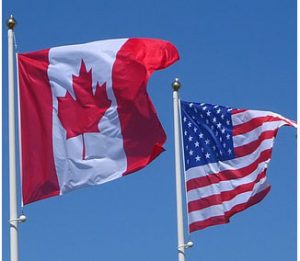
Canada and the United States are similar and different in many ways. One of the most different parts is their employment legislation. While both countries are great avenues for job seekers, the latter need to know the differences between the laws governing their chance of getting and maintaining a job. Here are 6 main differences between the two countries’ employment law!
1. Termination of Employee
In the United States, an employer can terminate its employees at will. However, Canada does not allow employers to fire their employees without any plausible cause. The employer needs to provide a justifiable reason on which the employee is getting sacked.
2. Employee with Disabilities
Both countries prohibit discriminatory practices against people with disabilities. In Canada, the employer must accommodate the disabled person, however, the level of accommodation is to the point of undue hardship. Unlike the United States, where the accommodation can have a low financial threshold. Some US states even recognized drug addiction and alcoholism as disabilities.
3. Minimum Wage
In Canada, each province sets its own hourly minimum wage, and this is usually revised annually. The current minimum wage varies between $ 9.75 and $ 10.30. Likewise, different states in the US provide a different minimum wage, with $ 7.25 being the most common one.

4. Mandatory Holidays
These are paid days off to the employees. The number of mandatory holidays varies from different provinces in Canada but the average number of days is 8 to 9. On the other hand, the US has a total of 7 paid holidays. Some organizations may additionally add 7 other paid holidays.
5. Minimum Employment Standards
The employment standards are outlined by the federal and provincial statutes in Canada while the federal, state, and local law outline that of the US. For instance, in the US, salaried employees are exempt from overtime pay. This is not the same in Canada where everyone is entitled to receive overtime pay.
6. Provinces V/S Federal
In Canada, around 90% of the workforce is regulated by provincial governments. Each province has their own labor law which can be quite, but not totally, identical to the other provinces. However, the US follows a much uniform set of labor law across most of the states, without adapting it to the different surroundings.
With each country having their different set of rules and regulations, employees should know their rights and be well-informed before they take on a job. They can seek the advice of an experienced attorney to better understand the law. More differences between Canada and the United States employment law can be read here.

